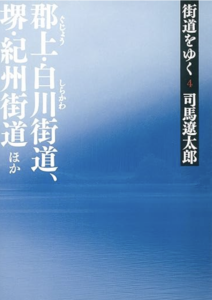Life Tips & Miscellaneous Travel and History Zen Philosophy and History Art and Sport Navigation of this blog
Summary
Travel is an act for human beings to visit new places and experience different cultures and histories. Through travel, people can actually feel historical events and people’s lives by visiting historical places and cultural heritage sites, and can gain a deeper understanding of history and broaden their own perspectives. In this section, we will discuss the historical background of the trip and the places visited based on Ryotaro Shiba’s “Kaido yuku” (On the Road) about this journey and history.

Kaidou wo yuku Vol 4 Sakai Kisyu Kaido.
In the previous article I discussed the roads in the roads of Hokkaido. In this article, we will discuss the Sakai-Kishu Kaido.
Sakai-Kishu Kaido
This time, we will visit Sakai, which can be reached by train from Sakai Station or Sakai Higashi Station on the Nankai Railway line, and the Kishu Kaido area, which runs from there to Wakayama, on our way south from Osaka to Kansai International Airport.


As you can see from the map, the town is also home to the tombs of Emperor Nintoku and other ancient tombs.

The tombs, including Emperor Nintoku’s Mausoleum, are clearly visible in photographs taken from the sky, but on the ground they become nothing more than a forest of trees.

Start your trip by visiting Chikuma, a long-established buckwheat noodle shop.

He tries to eat soba (buckwheat noodles), but unfortunately it is closed, so he heads for Nanzenji, a Zen temple built in the days when Sakai was a prosperous commercial city.

Incidentally, Mutahiro’s Chinese Soba is located a few minutes’ walk from Sakaihigashi Station.

The niboshi ramen is also excellent.

Here we return to our road trip. In the Warring States period, Sakai was one of the best free commercial cities in the East, with its own self-governing authority and the entire town surrounded by a moat, until it was conquered by Oda Nobunaga.

Famous Sakai merchants include Munehisa Imai and Noya Sukezaemon. He established Japanese towns in the Philippines and Cambodia, and when it was popular among the feudal lords to collect rare tea utensils at the time, he took notice of it and sold the pottery (or toilet bowls, according to one theory) that was commonly used in those areas as a rare item to Toyotomi Hideyoshi. When he was about to be caught, he escaped to Luzon (a Japanese town in the Philippines) and eventually went to Cambodia, where he became a wealthy merchant. (Incidentally, the same actor played the role of Lu Sung Sukezaemon in “Sanadamaru,” which aired in 2016 and was also a hot topic at the time.)

The word “furyu,” which is still in common use today, became popular in the up-and-coming town of Sakai. The three major centers of “furyu” at that time were Kyoto, Nara, and Sakai. Especially after the Onin War, Kyoto and Nara became desolate, and Sakai became the center of the furyu. In Sakai, tea masters such as Sen no Rikyu and the aforementioned Imai Munehisa emerged, and while there was a furyu based on wabi and sabi, it is said that the glittering style, as expressed in the phrase “buying gold brocade from Sakai (photo below),” which was popular at the time, was also considered “furyu.

With such trends of the times in mind, Ryotaro Shiba and his group headed for Nanzenji Temple, which was rebuilt by monk Sawan after Sakai entered a period of decline (early Edo period).

Sawan monk is also famous as the person who surrendered takwan (pickled daikon radish), an essential ingredient of the Japanese diet.

He was known as one of the leading Zen monks of his time, and was loved by many people, including Tokugawa Iemitsu and many feudal lords and aristocrats, partly because he had a charming way of speaking and teaching, such as by comparing his Zen teachings to familiar objects. However, Sawan himself never lost his Zen style of “Karei-dan,” which does not seek fame or profit, and he was the very embodiment of the “elegant” style, saying that he was only a Zen monk and leaving behind many works of poetry.
After their stay at Nanshuzenji, the group headed to Funatayi Shrine and stopped at a long-established udon restaurant, Miu Miu, near the shrine.

After eating the famous “udon sukiyaki” at Miimao, the trip ends at a place down the Kishu Highway.

In the next article, we will discuss the Gujo/Shirakawa Highway and the Etchu Roads.


コメント